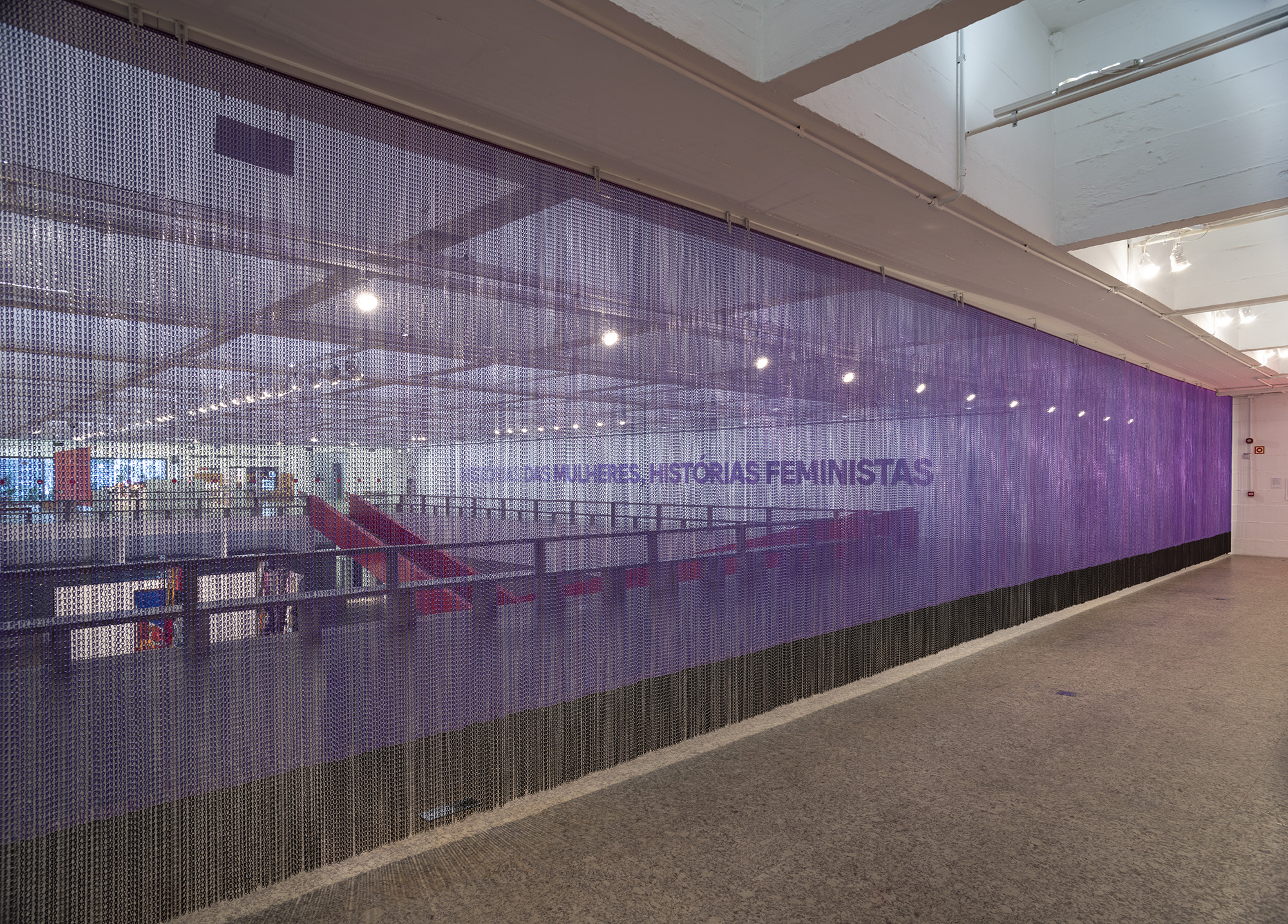Ruth Buchanan
A cena a qual eu me encontro/Ou, onde meu corpo pertence, 2019
Author:
Ruth BuchananBio:
New Plymouth, Nova Zelândia, 1980Title:
A cena a qual eu me encontro/Ou, onde meu corpo pertenceDate:
2019Medium:
Correntes de alumínio revestidas, equipamentos de fixaçãoDimensions:
309 x 1928 cmCredit line:
Doação da artista, no contexto da exposição Histórias das mulheres, histórias feministas, 2019Object type:
InstalaçãoInventory number:
MASP.10975Photography credits:
Eduardo Ortega
Ruth Buchanan’s work is based on the study of systems and codes, the creation of design and architectural objects, and the symbolism of colors and shapes. These elements are presented in installations, modifying the space they occupy and shifting the relationship between public, space, and objects. In her works, Buchanan also creates devices to question how the arrangement of furniture or the arrangement of shapes and colors alter and define the experience of the body and the perception of space and objects. Featuring a wide variety of formats, her works propose conflicting encounters between the individual and the subjective body, between objective systems of language, control, and collective bodies. Thus, Buchanan rethinks the design of organization systems, whether art galleries, archives, or libraries, expanding forms and concepts traditionally utilized in the implementation of power structures and in the transmission and retention of information.
In the installation The Scene in Which I find Myself/Or, Where Does My Body Belong, commissioned for the Feminist Histories exhibition, the artist directly intervenes in the building’s architecture and in the exhibition space with a curtain of violet and black chains, colors that symbolize certain aspects of the feminist movement. The work mediates between the exterior and the interior of the gallery space. The viewer is asked to pass through the curtain in order to enter the gallery, which displays artworks highlighting issues of the body, gender roles, and sexuality. By engaging the viewer through noise, tactility, and movement, the work creates an awareness of bodily and psychological change and highlights the meanings of the act of entering into a new space.
— Beatriz Lemos, master in social history of culture, PUC‑RJ, 2019



